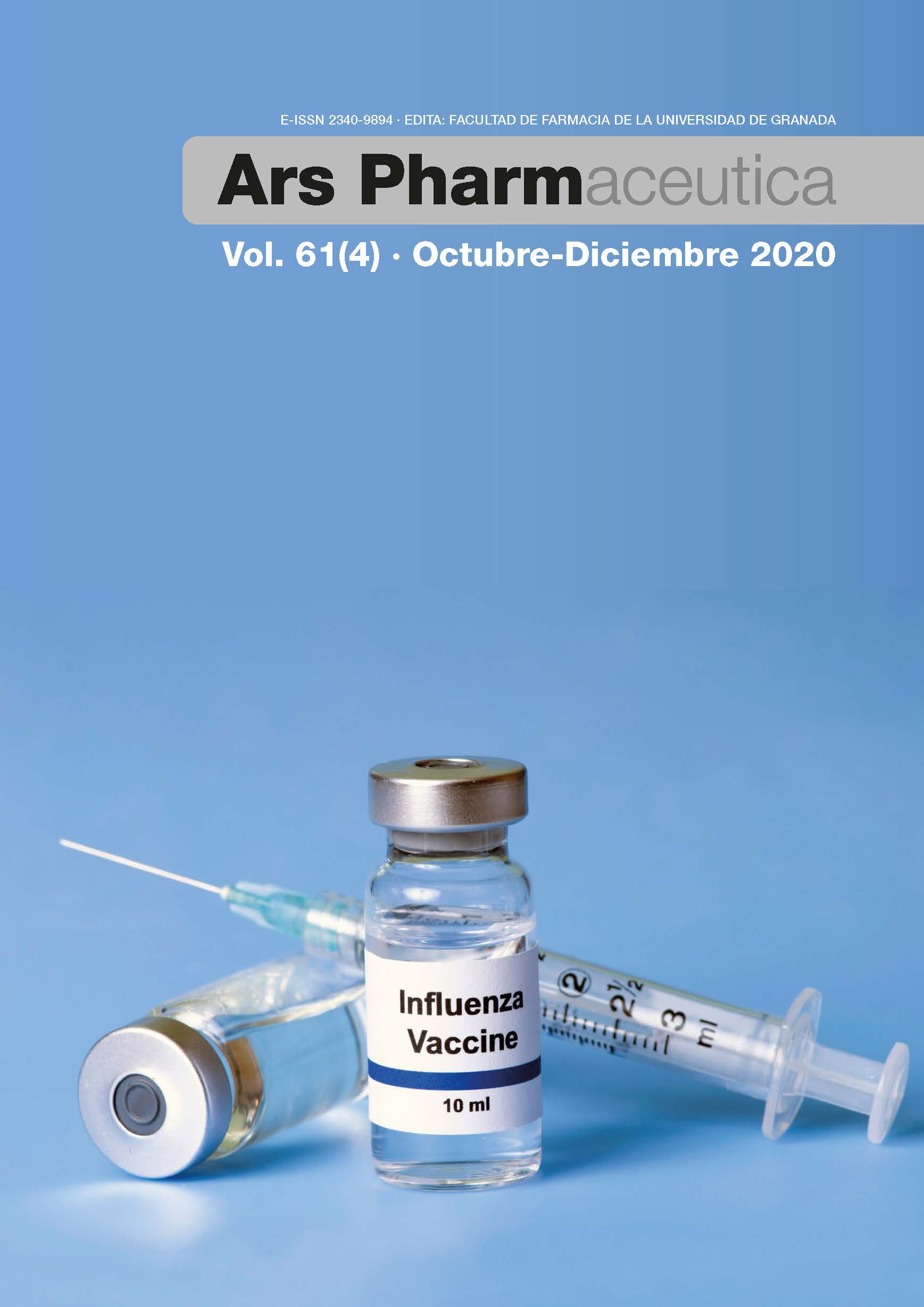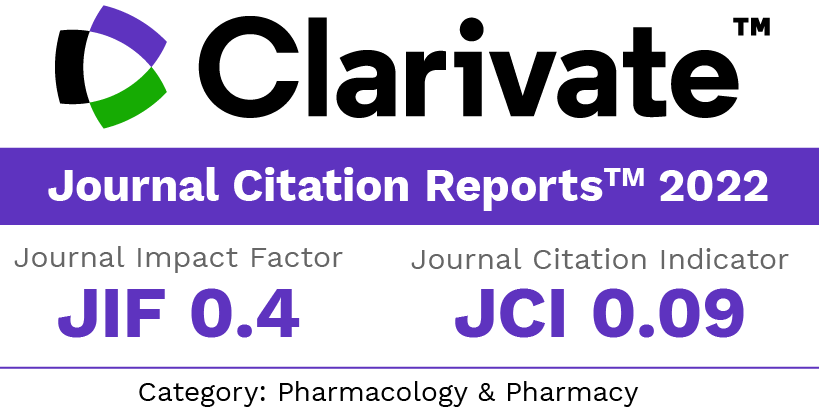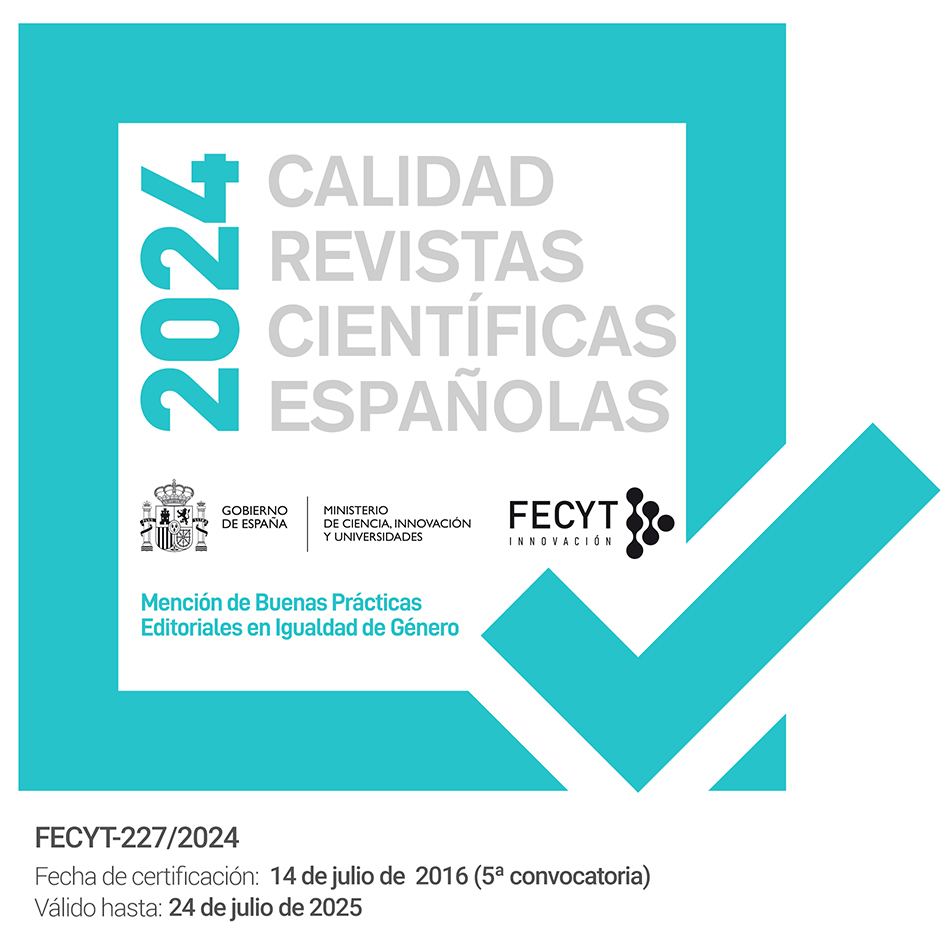Experiencia en el tratamiento de tumores hepáticos mediante radioembolización con 90Y-microesferas de resina
Palabras clave:
Radioembolización, 90Y microesferas de resina, tumor hepático, supervivencia global.Resumen
Introducción: El tratamiento de tumores hepáticos se realiza mediante resección quirúrgica. Cuando no es posible se emplean terapias alternativas localizadas como la radioembolización transarterial (TARE)
Método: Estudio retrospectivo y descriptivo en 27 pacientes con tumor hepático no resecable sometidos a TARE con microesferas de resina cargadas con Ytrio-90. Se estudiaron características basales, demográficas y clínicas, y supervivencia global a 18 meses. El análisis de supervivencia se realizó mediante el método de Kaplan-Meier.
Resultados: El 81% de los pacientes fueron hombres y la edad osciló entre 52-85 años. El 78%, de los casos fueron tumores hepáticos primarios, destacando el carcinoma hepatocelular en estadio BCLC B (44%). El origen de tumor hepático secundario más frecuente fue adenocarcinoma colorrectal. El ECOG fue 0 para el 78% de los pacientes y los antecedentes alcoholismo (41%) y hepatitis C (56%). La media de actividad administrada en cada TARE fue 1,8 GBq (0,9-3,4 GBq). El 34% recibieron más de un tratamiento previo a la TARE: resección quirúrgica (11%), TAE o TACE (48%), ablación por radiofrecuencia (22%), inhibidores multiquinasas (15%). El 33% recibieron tratamiento posterior con inhibidores multiquinasas. La supervivencia global del total de pacientes a 18 meses fue del 58,9%. En pacientes con CHC BCLC B, la mediana de supervivencia fue de 15,6 meses.
Conclusión: Los resultados de supervivencia concuerdan con los de otros estudios, aunque existen diferencias en algunas de las variables. Es necesario disponer de mayor número de pacientes y tiempo de seguimiento para analizar su influencia en la supervivencia.
Descargas
Citas
Bray F, Ferlay J, Soerjomataram I, Siegel RL, Torre LA, Jemal A. Global cancer statistics 2018: GLOBOCAN estimates of incidence and mortality worldwide for 36 cancers in 185 countries. CA: Cancer J Clin. 2018;68(6):394-424. doi: 10.3322/caac.21492.
Arnold M, Abnet CC, Neale RE, Vignat J, Giovannucci EL, McGlynn KA, et al. Global Burden of 5 Major Types of Gastrointestinal Cancer. Gastroenterology. 2020. doi: 10.1053/j.gastro.2020.02.068.
London WT, Petrick JL, McGlynn KA. Liver Cancer. En: Thun MJ, Linet MS, Cerhan JR, Haiman CA, Schottenfeld D, editores. Cancer Epidemiology and Prevention. 4ª ed. New York, Oxford University Press, 2018, p. 635-60. ISBN: 9780190238667.
Ioannou GN, Splan MF, Weiss NS, McDonald GB, Beretta L, Lee SP. Incidence and predictors of hepatocellular carcinoma in patients with cirrhosis. Clin Gastroenterol Hepatol 2007;5(8):938-45. doi: 10.1016/j.cgh.2007.02.039.
N’Kontchou G, Paries J, Htar MTT, Ganne–Carrie N, Costentin L, Grando–Lemaire V, et al. Risk factors for hepatocellular carcinoma in patients with alcoholic or viral C cirrhosis. Clin Gastroenterol Hepatol 2006;4(8):1062-8. doi: 10.1016/j.cgh.2006.05.013.
Fattovich G, Giustina G, Degos F, Tremolada F, Diodati G, Almasio P, et al. Morbidity and mortality in compensated cirrhosis type C: a retrospective follow-up study of 384 patients. Gastroenterology. 1997;112(2):463-72. doi: 10.1053/gast.1997.v112.pm9024300.
Khan SA, Thomas HC, Davidson BR, Taylor-Robinson SD. Cholangiocarcinoma. The Lancet. 2005;366(9493):1303-14. doi: 10.1016/S0140-6736(05)67530-7.
Doherty GM. Current diagnosis & treatment: surgery: Lange Medical Books/McGraw-Hill; 2010. 1312 p. ISSN: 9780071792127.
Türk G, Eldem G, Kılıçkap S, Bozkurt FM, Salancı BV, Çil BE, et al. Outcomes of radioembolization in patients with chemorefractory colorectal cancer liver metastasis: A single-center experience.
J gastrointes cancer. 2019;50(2):236-43. doi: 10.1007/s12029-018-0053-z.
EASL clinical practice guidelines: management of hepatocellular carcinoma. J Hepatol. 2018;69(1):182-236. doi: 10.1016/j.jhep.2018.03.019.
Mikell JK, Dewaraja YK, Owen D, editores. Transarterial Radioembolization for Hepatocellular Carcinoma and Hepatic Metastases: Clinical Aspects and Dosimetry Models. Semin Radiat Onco. 2020;30(1): 68-76. doi: 10.1016/j.semradonc.2019.08.005.
Giammarile F, Bodei L, Chiesa C, Flux G, Forrer F, Kraeber-Bodere F, et al. EANM procedure guideline for the treatment of liver cancer and liver metastases with intra-arterial radioactive compounds. Eur J Nucl Med Mol Imaging. 2011;38(7):1393. doi: 10.1007/s00259-011-1812-2.
Lau WY, Teoh YL, Win KM, Lee R-C, De Villa VH, Kim YHJ, et al. Current role of selective internal radiation with yttrium-90 in liver tumors. Future Oncol. 2016;12(9):1193-204. doi: 10.2217/fon-2016-0035.
Rodríguez-Fraile M, Iñarrairaegui M. Radioembolización de tumores hepáticos con 90Y-microesferas. Rev Esp Med Nucl Imagen Mol. 2015;34(4):244-57. doi: 10.1016/j.remn.2015.03.004.
Paprottka K, Schoeppe F, Ingrisch M, Rübenthaler J, Sommer N, De Toni E, et al. Pre-therapeutic factors for predicting survival after radioembolization: a single-center experience in 389 patients. Eur J Nucl Med Mol Imaging. 2017;44(7):1185-93. doi: 10.1007/s00259-017-3646-z.
Gulec SA, Mesoloras G, Dezarn WA, McNeillie P, Kennedy AS. Safety and efficacy of Y-90 microsphere treatment in patients with primary and metastatic liver cancer: the tumor selectivity of the treatment as a function of tumor to liver flow ratio. J Transl Med. 2007;5(1):15. doi: 10.1186/1479-5876-5-15.
Pöpperl G, Helmberger T, Münzing W, Schmid R, Jacobs TF, Tatsch K. Selective internal radiation therapy with SIR-Spheres® in patients with nonresectable liver tumors. Cancer Biother Radiopharm. 2005;20(2):200-8. doi: 10.1089/cbr.2005.20.200.
Lim L, Gibbs P, Yip D, Shapiro J, Dowling R, Smith D, et al. Prospective study of treatment with selective internal radiation therapy spheres in patients with unresectable primary or secondary hepatic malignancies. Intern Med J. 2005;35(4):222-7. doi: 10.1111/j.1445-5994.2005.00789.x.
Garin E, Rolland Y, Boucher E, Ardisson V, Laffont S, Boudjema K, et al. First experience of hepatic radioembolization using microspheres labelled with yttrium-90 (TheraSphere): practical aspects concerning its implementation. Eur J Nucl Med Mol Imaging. 2010;37(3):453-61. doi: 10.1007/s00259-009-1279-6.
Yammine K, Kamar F, Nasser J, Tayar C, Ghosn M, Chehade F, et al. Single-Institution Experience with Selective Internal Radiation Therapy (SIRT) for the Treatment of Primary and Secondary Hepatic Tumors. Cureus. 2020;12(4). doi: 10.7759/cureus.7628.
Jiao L, Szyszko T, Al-Nahhas A, Tait P, Canelo R, Stamp G, et al. Clinical and imaging experience with yttrium-90 microspheres in the management of unresectable liver tumours. Eur J Surg Oncol. 2007;33(5):597-602. doi: 10.1016/j.ejso.2007.02.021.
Salem R, Lewandowski RJ, Kulik L, Wang E, Riaz A, Ryu RK, et al. Radioembolization results in longer time-to-progression and reduced toxicity compared with chemoembolization in patients with hepatocellular carcinoma. Gastroenterology. 2011;140(2):497-507. doi: 10.1053/j.gastro.2010.10.049.
Sangro B, Carpanese L, Cianni R, Golfieri R, Gasparini D, Ezziddin S, et al. Survival after yttrium‐90 resin microsphere radioembolization of hepatocellular carcinoma across Barcelona clinic liver cancer stages: a European evaluation. Hepatology. 2011;54(3):868-78. doi: 10.1002/hep.24451.
Mazzaferro V, Sposito C, Bhoori S, Romito R, Chiesa C, Morosi C, et al. Yttrium‐90 radioembolization for intermediate‐advanced hepatocellular carcinoma: a phase 2 study. Hepatology. 2013;57(5):1826-37. doi: 10.1002/hep.26014.
Hilgard P, Hamami M, Fouly AE, Scherag A, Müller S, Ertle J, et al. Radioembolization with yttrium‐90 glass microspheres in hepatocellular carcinoma: European experience on safety and long‐term survival. Hepatology. 2010;52(5):1741-9. doi: 10.1002/hep.23944.
Descargas
Publicado
Cómo citar
Número
Sección
Licencia
Los artículos que se publican en esta revista están sujetos a los siguientes términos en relación a los derechos patrimoniales o de explotación:
- Los autores/as conservarán sus derechos de autor y garantizarán a la revista el derecho de primera publicación de su obra, la cual se distribuirá con una licencia Creative Commons BY-NC-SA 4.0 que permite a terceros reutilizar la obra siempre que se indique su autor, se cite la fuente original y no se haga un uso comercial de la misma.
- Los autores/as podrán adoptar otros acuerdos de licencia no exclusiva de distribución de la versión de la obra publicada (p. ej.: depositarla en un archivo telemático institucional o publicarla en un volumen monográfico) siempre que se indique la fuente original de su publicación.
- Se permite y recomienda a los autores/as difundir su obra a través de Internet (p. ej.: en repositorios institucionales o en su página web) antes y durante el proceso de envío, lo cual puede producir intercambios interesantes y aumentar las citas de la obra publicada. (Véase El efecto del acceso abierto).




















